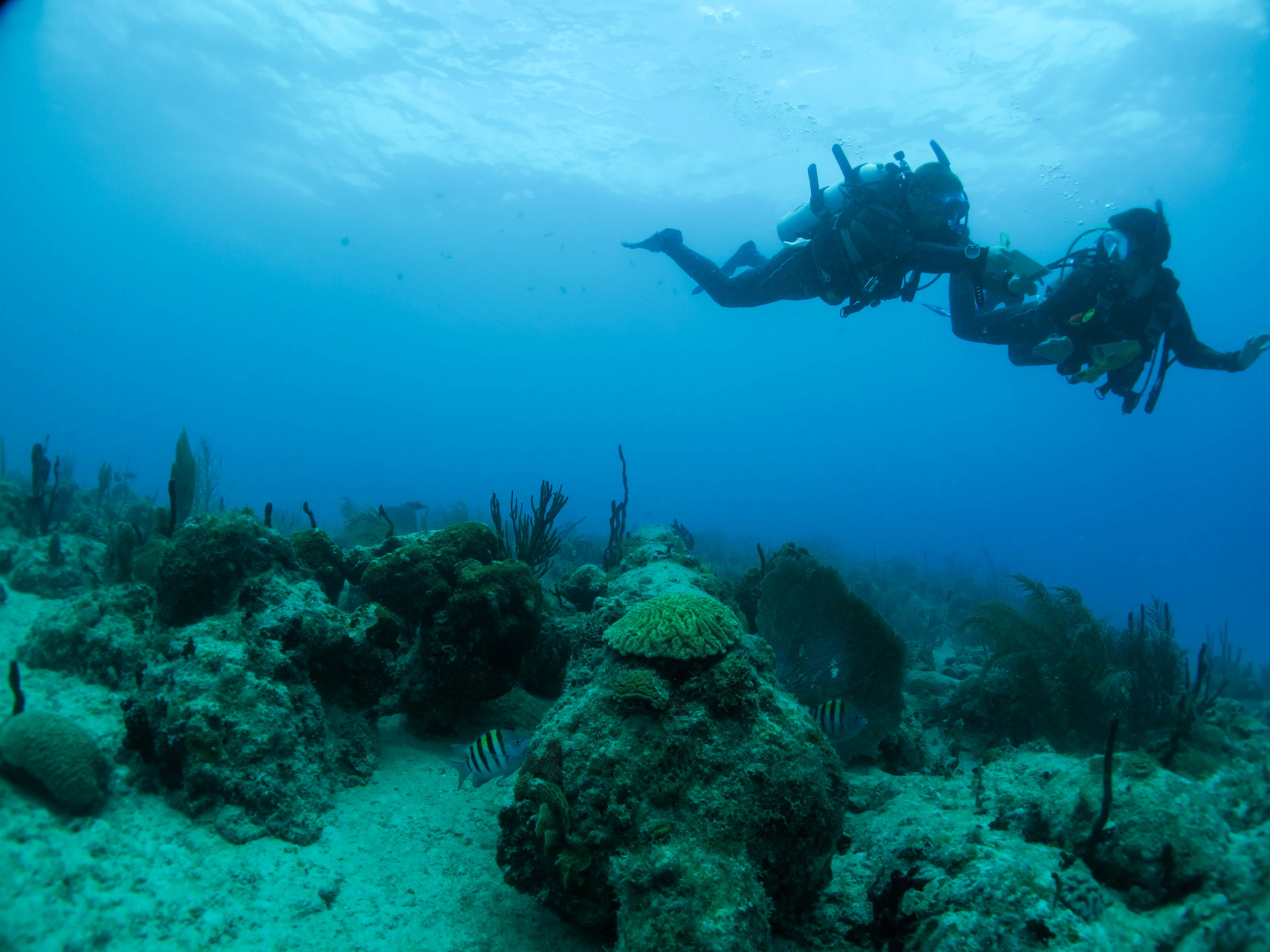1. Prepare a proposal for establishment and development of the park.
This is a compilation of all site data gathered to this point. It should be presented to an agency that ultimately would support and manage the park. Representatives of the local community should also be given copies of the report. Any potential problems regarding the establishment of a park should be addressed at this stage. If the site qualifies for the National Register of Historic Places nomination, such application should be included in the report.
2. Establish park boundaries.
Clear park boundaries need to encompass all the important archaeological and biological features of the site and ensure that the site is within the jurisdiction of an appropriate agency.
3. Install an appropriate buoy system.
A spar buoy and at least one mooring buoy should be placed on the site. The spar buoy contains identifying information about the park along with jurisdictional logo of the administrative agency. However, it is not intended for mooring. A mooring buoy (or a system of mooring buoys depending on the size of the site and expected number of visitors) should be placed to prevent anchor damage and enhance the safety of divers visiting the site.
4. Place an underwater plaque in a prominent location of the site.
This should be a waterproof and marine environment resistant permanent plaque located underwater near significant features of the site. The plaque should give brief information about the origin of the site.
5. Create an underwater guide to the site.
Available to the diving and non-diving public alike, the underwater slate should contain a site plan, historical information, safety concerns, and rules of stewardship in the park.
6. Create a land-based component of the park in a relative proximity of the site.
This can be a variety of facilities such as a museum, a small building, or a kiosk. In this manner the non-diving community can learn about the site. The land-based component can display relevant artifacts, and brochures and other literature regarding the site can be made available.
7. Publish a brochure about the site.
The brochure should be an expanded version of the underwater slate and should be made available to the public in the land-based component of the park, in dive shops, and by request from the administrating agency.
8. Organize a park dedication ceremony.
Once all the components are assembled, a proper dedication ceremony should take place. The public should be invited, along with the diving, academic, and government communities. The press should be contacted to ensure adequate coverage.
9. Establish site monitoring procedures.
This is a key element to the park's success. The site must be monitored to ensure that no harm is being done and to assess any changes (both positive and negative) in the features of the site. Site monitoring efforts can be combined with regular maintenance of the buoy systems and other park components.
10. Encourage continuous public involvement in the protection and monitoring of the park.
This model allows for the simultaneous and sustainable utilization of the park by both recreational divers and researchers. The diving community can be involved in monitoring the site and educating other divers about its importance, while the scientific community can use the site as a permanent field resource for students and professionals alike.


